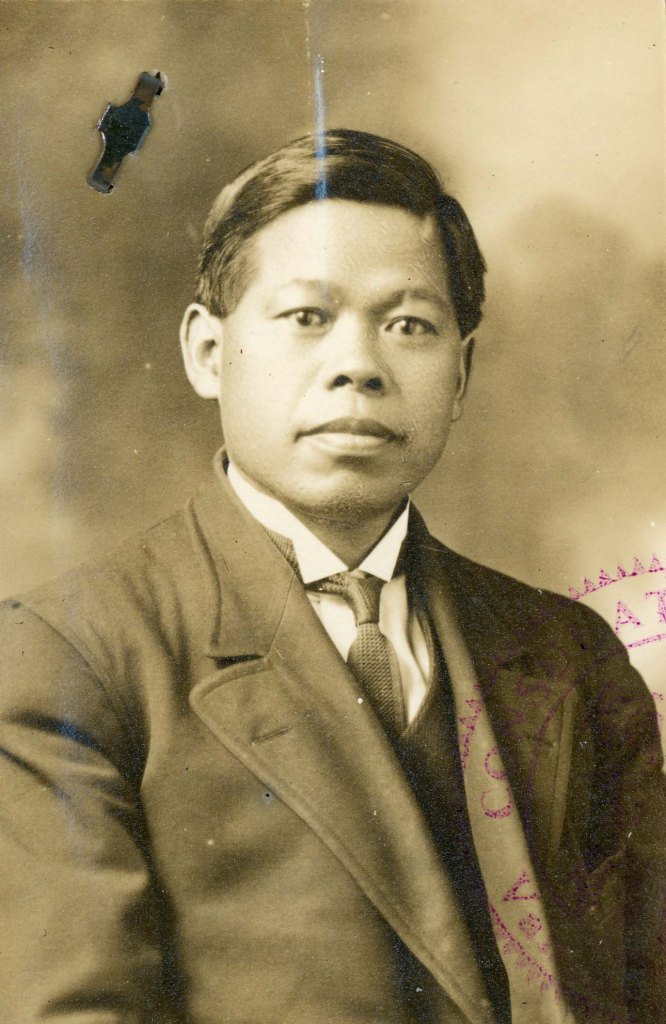
In the late 19th Century, a teenage boy arrived in Victoria from China and began working in a store owned by members of his family. A year later Ling Lam moved to Vancouver where he studied English at the Chinese Methodist Church and worked in the canneries in Steveston. He started out in business by teaching himself how to bake bread and peddled buns door-to-door around Steveston. In 1895 he bought property and opened a store which became one of those places that embeds itself into a community’s collective memory.
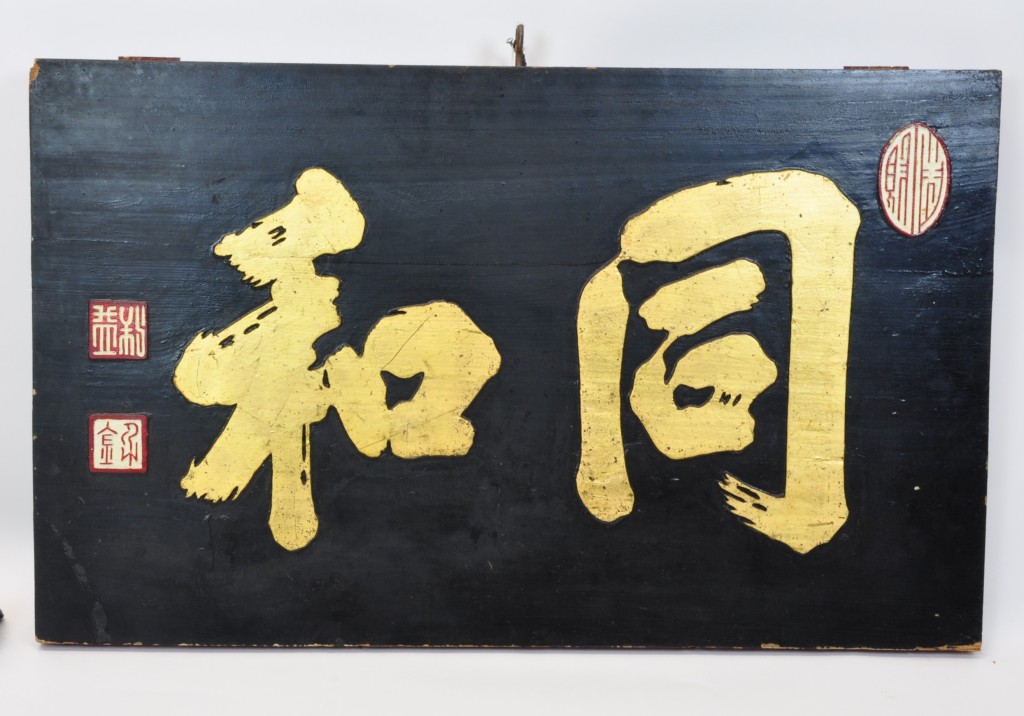
Ling Lam named his business Hong Wo, meaning “Peace Together” or “Living in Harmony”. Located outside the dyke near the foot of Trites Road and near the Nelson Brothers Cannery, the place was a true General Store. If you couldn’t get what you needed at the Hong Wo Store, you probably couldn’t get it anywhere. The building was located adjacent to a wharf where fishboats could tie up and get supplies before the next fisheries opening. To streamline the process an order form was developed and issued to the fisherman who could check off the items they needed and the order would be ready for pickup at the specified time. He sold provisions to fishermen, canneries, boatbuilders, farmers and the general public.
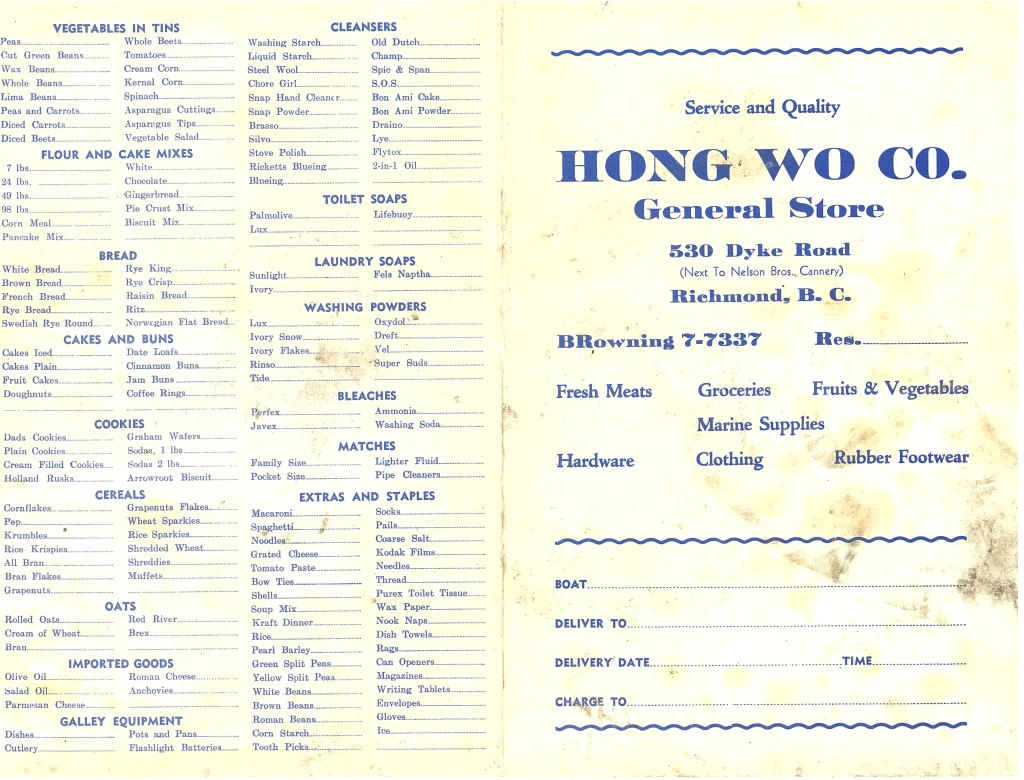
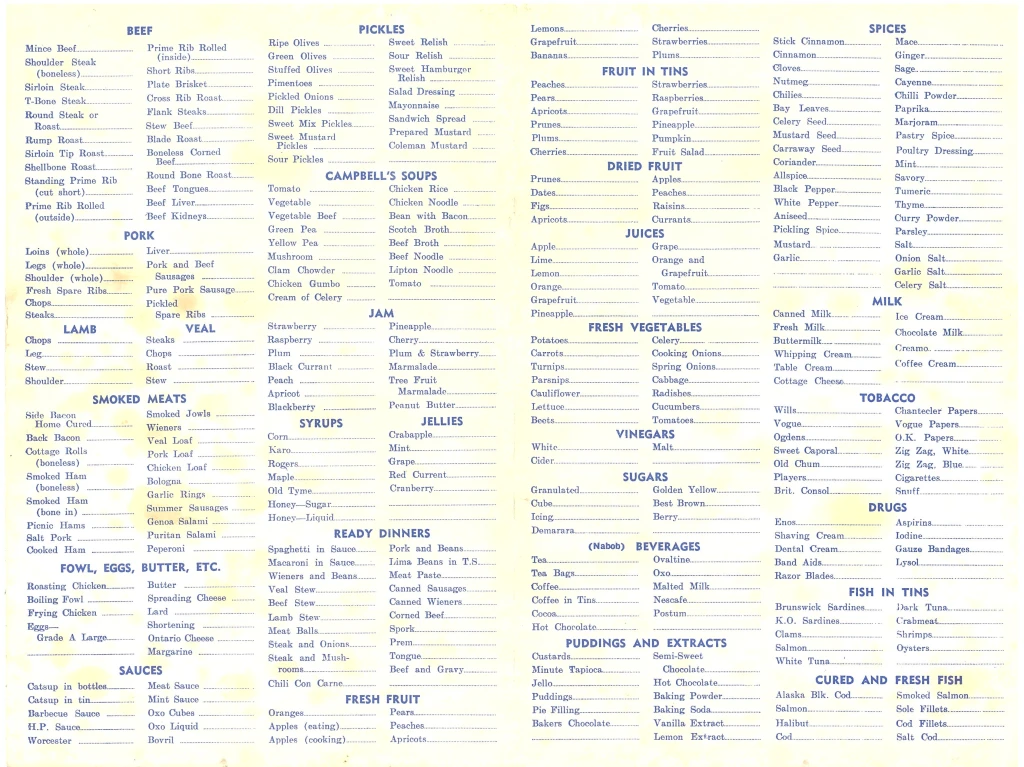
The lot that Mr. Lam had built his store on was approximately 235 feet wide by 425 feet long (2.27 acres), and extended over the dyke to the high water line. Mr. Lam also acquired acreage north of that lot which was bordered on the north side by the CN Railway right-of-way and on the east by Trites Road (1.3 acres). Open fields to the north of the railway line (11.03 acres) became his farmlands, another arm of his business.
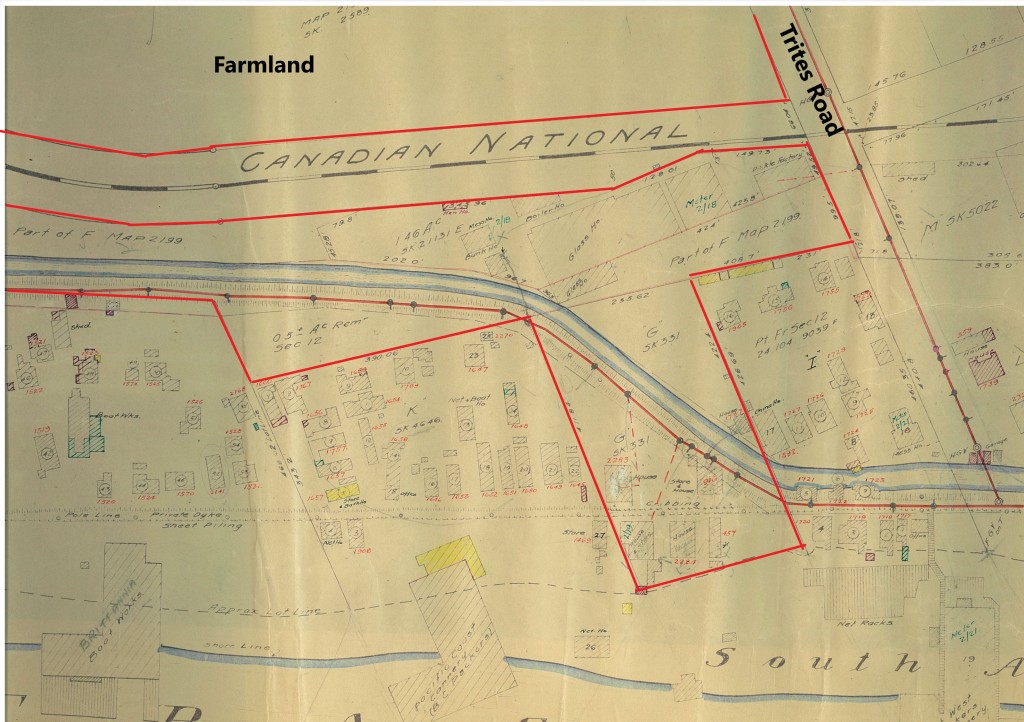
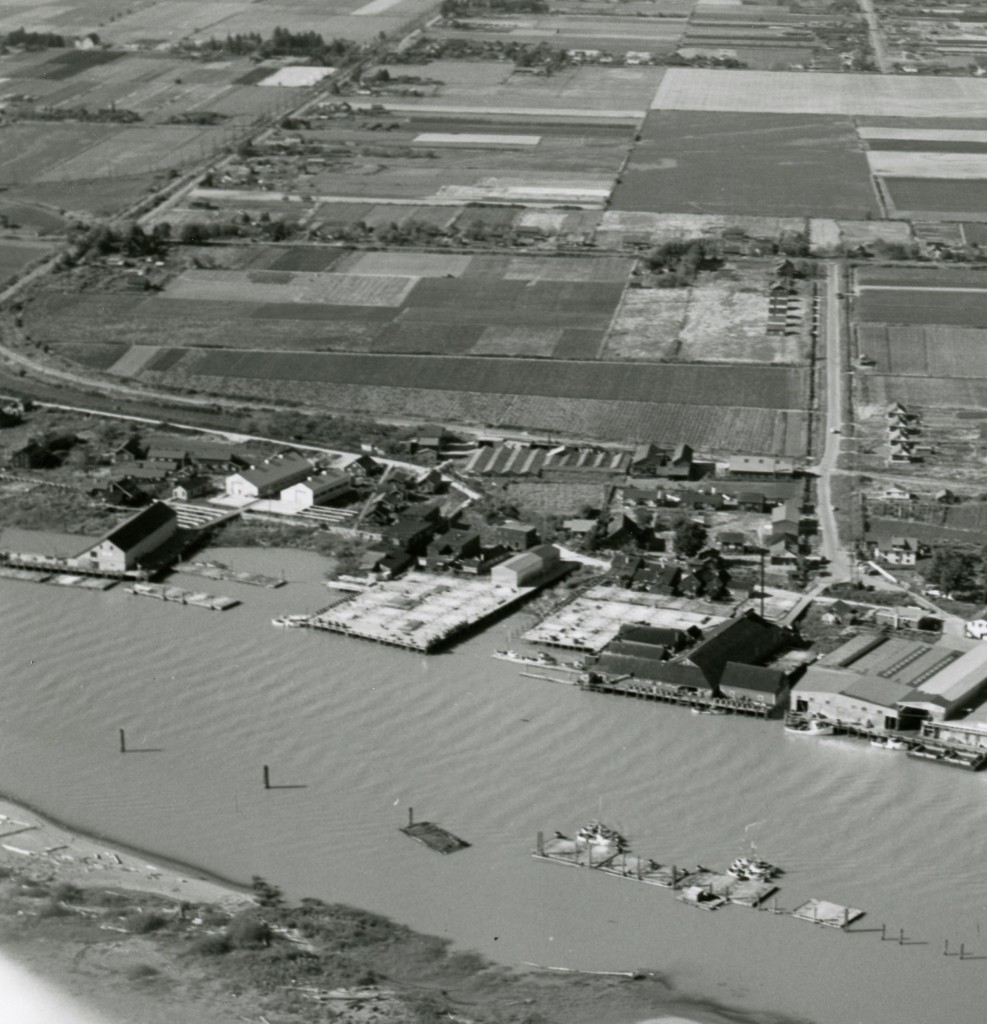
Once Ling Lam had his retail and farming businesses running, he returned to China to get married. When he was joined by his wife in Canada they lived in an apartment above the store. Around 1908 the store was destroyed by fire and the family moved into a cannery house until the new store was built. The Lam children walked three miles along the dyke into Steveston to go to school. With the business and farm prospering, Mr. Lam moved the family into a house in East Vancouver around 1914.
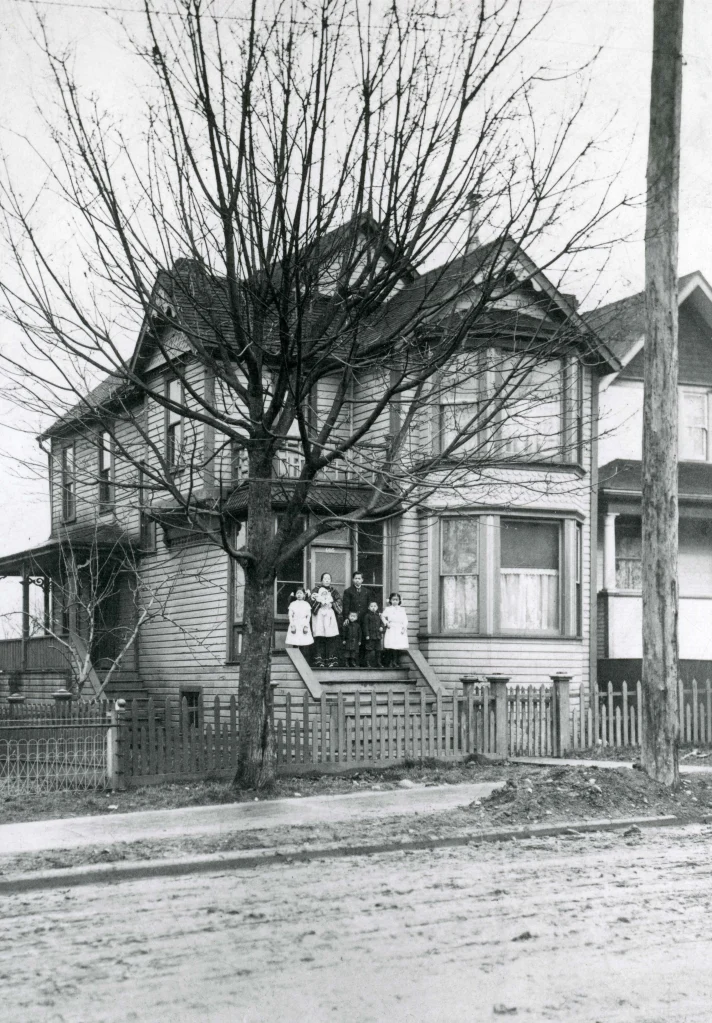
To order stock for the store in the early days, Mr. Lam would ride a bike to New Westminster to his supplier’s offices. The order for the season would be delivered by boat to the wharf and shed behind the store. The bicycle was eventually retired when a telephone was hooked up in the store, one of the first in Richmond, and orders could be phoned in.
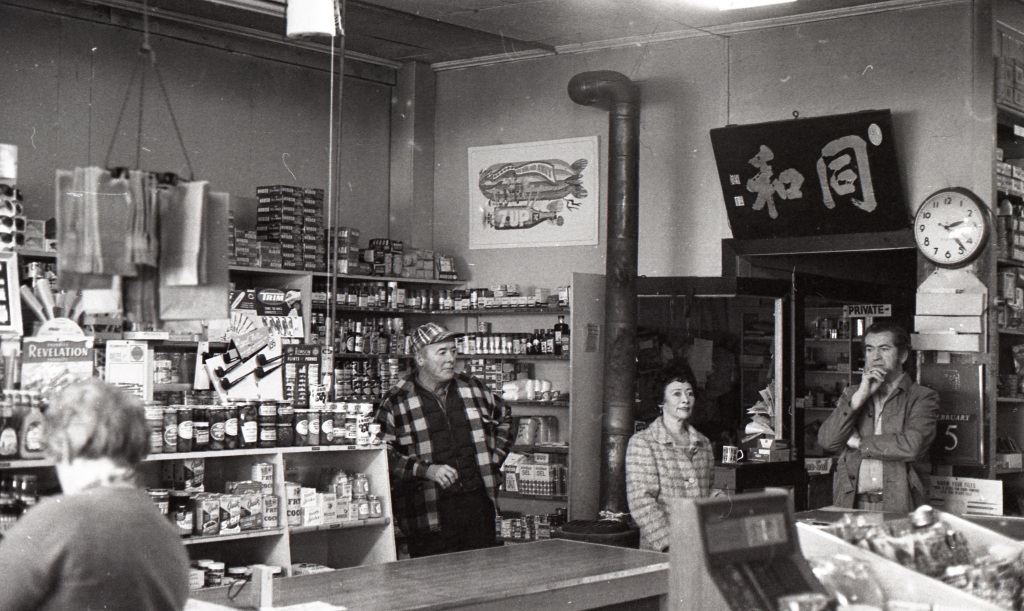
Around 1914 Mr. Lam began to act as a labour contractor to two canneries, providing seasonal Chinese workers. He also employed the workers on his farms, supplying accommodations, food and a cook for a temporary crew of about 30 during the growing season and harvest. A full time foreman, assistant and truck driver were also employed.
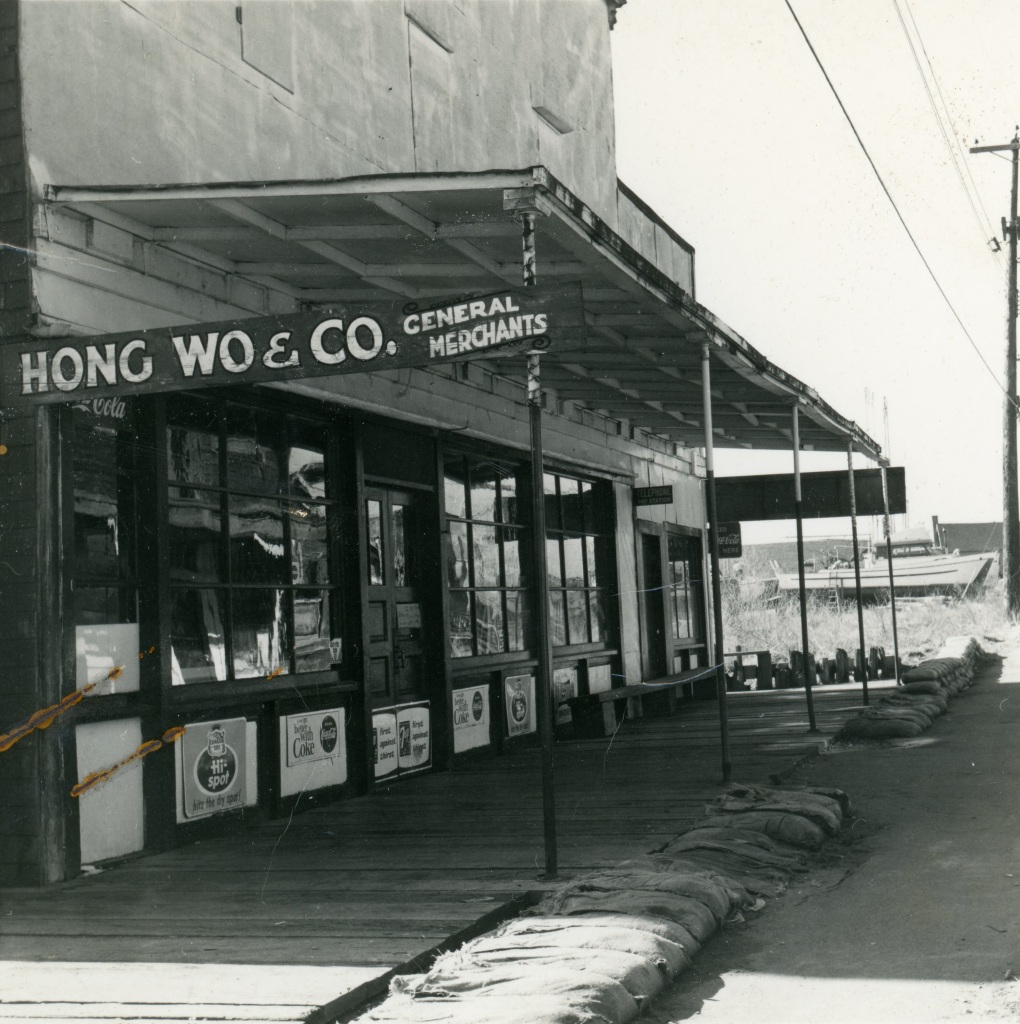
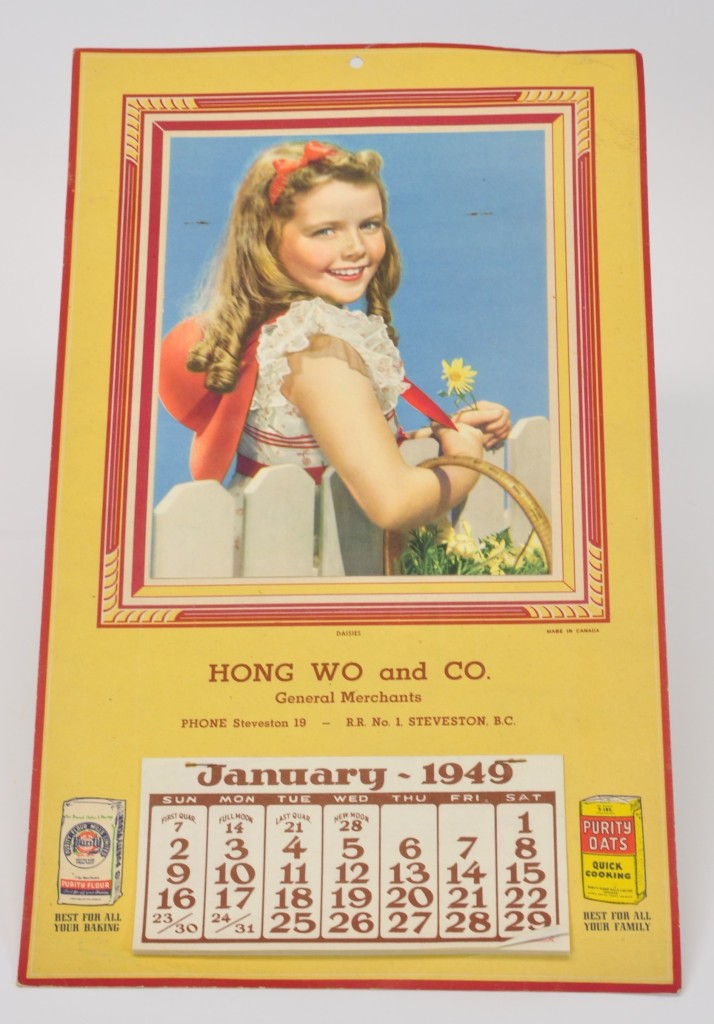
During its peak, the farms owned by Mr. Lam produced tomatoes from about 30 greenhouses. Potatoes and beans were grown in the open fields along with a large crop of cucumbers for pickles. A complex of buildings was built on the lots south of the rail line. These included a pickle factory, complete with at least 20 eight-foot deep concrete vats for brining, storage buildings and greenhouses. Several bunkhouses were located on the property as well as a cookhouse with a large brick and metal wok and a building where barrels were assembled. Mr. Lam also invented a machine to sort cucumbers for dill pickles, a product which formed a large part of his farming business.
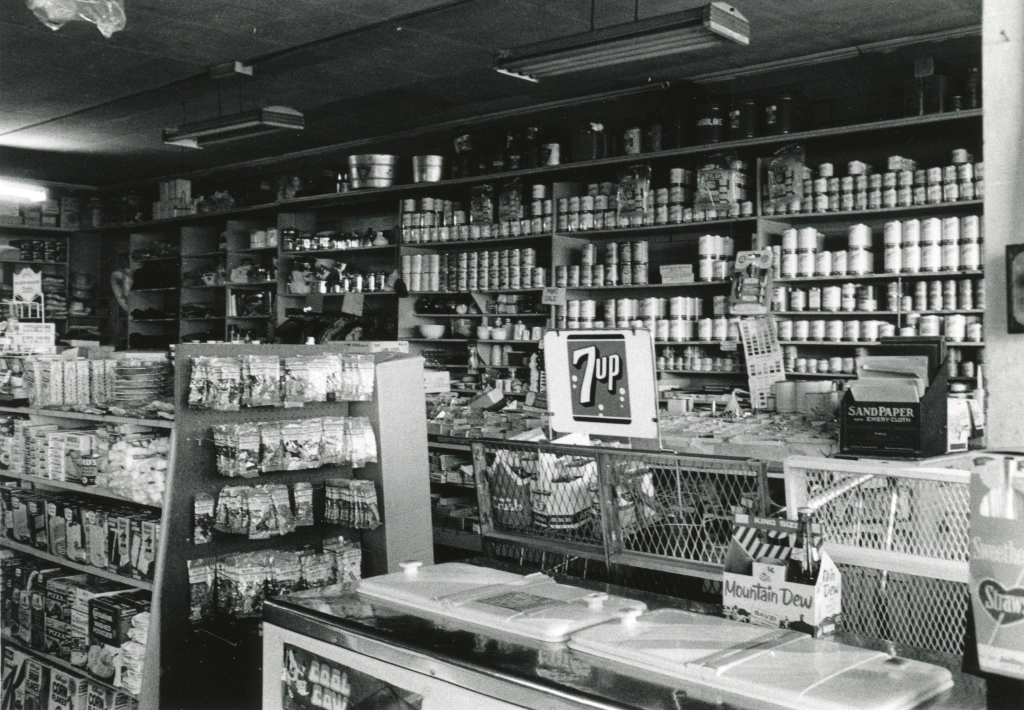
As reported by his daughter Jessie Lam Ross in a 1968 Richmond Review newspaper article, “He was a big name among the Chinese growers. He contracted with Empress, Royal City, Nalley’s, and other companies, and kept about 250 acres under cultivation in Steveston. Day and night he was on the go. He used to haul cukes in and pile them in huge stacks for the dill pickles.”

Ling Lam was also very active in Vancouver’s Chinese community, acting as the chairman of the Chinese Merchant’s Association, serving as an Elder in the Chinese United Church and starting the Chinese Farmer’s Association. He was known as a dedicated, principled, hard working man.
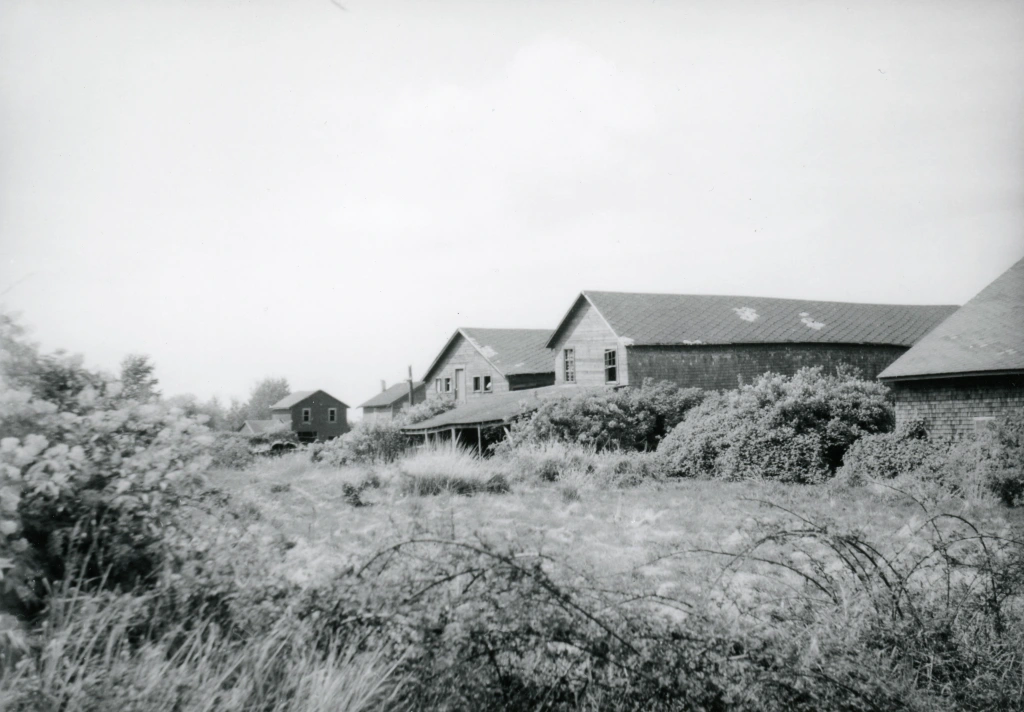
“I never saw him in work clothes,” his daughter Jessie remembered,” He always wore a blue serge suit and, in the summer, a shirt and tie and blue serge pants. He only took two holidays in his life, and then it was to go to California to look for seeds.”
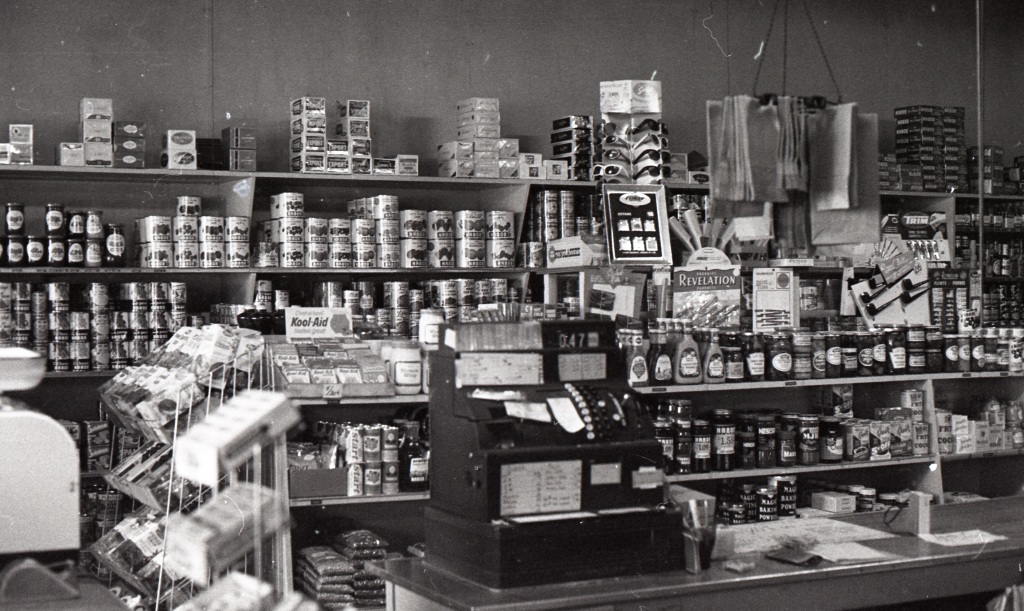
After Mr. Lam’s death in 1939, his son George Lam and daughter Jessie Lam Ross took over his business, operating his store until 1971. With the store’s closure the property and buildings on it began to deteriorate, causing concern for the owners of nearby cannery buildings after several fires had been extinguished by the Richmond Fire Department. Efforts by the Steveston Historical Society to have the Hong Wo buildings declared a heritage site proved to be in vain and the store and surrounding buildings were destroyed in 1977.
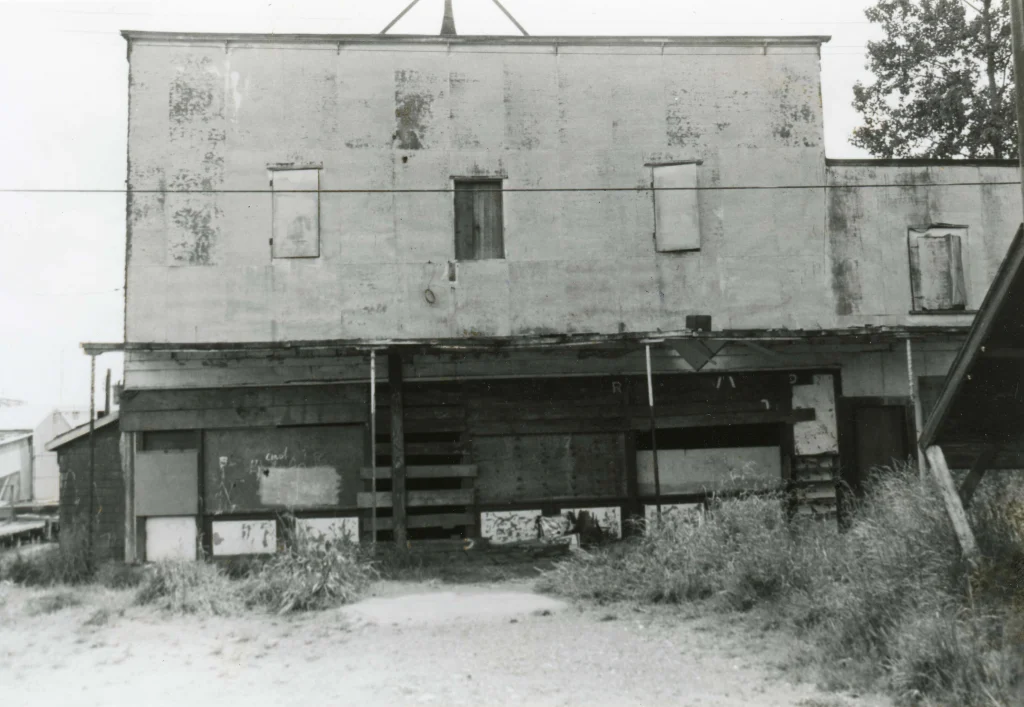
While the Hong Wo Store has been gone for nearly half a century its 75 years of service to industry and community make it one of the unique components of Richmond’s history. The store’s story and that of Ling Lam, a self-made man who built a thriving business from humble beginnings, are memorialized in a sign at the corner of Trites Road and Westwater Drive near the location of his pickle factory.
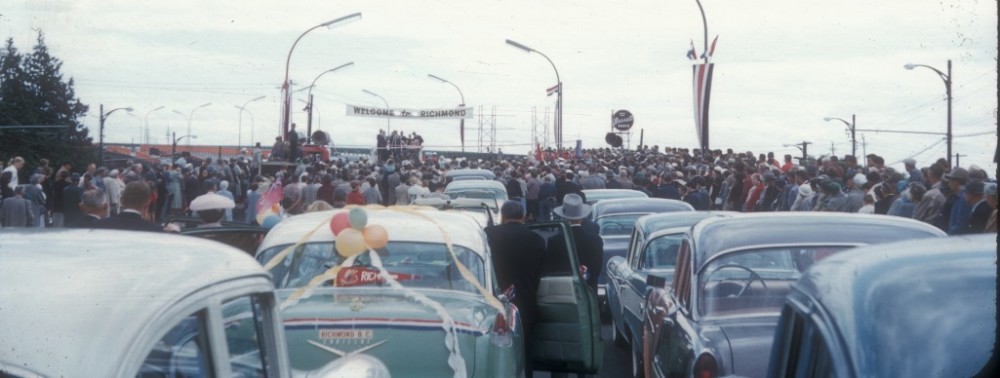
You must be logged in to post a comment.